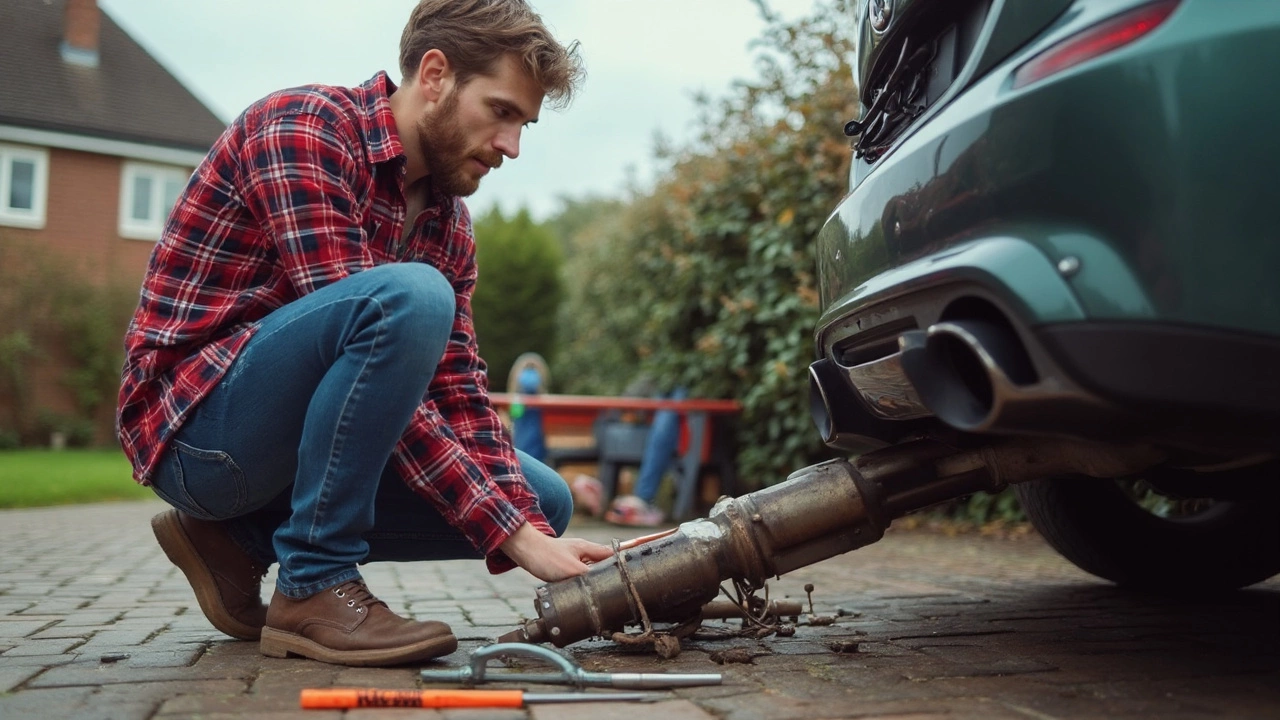Changing Exhaust: A Practical Guide for DIYers and Professionals
When working with changing exhaust, the process of removing and fitting new exhaust components to restore power, reduce noise, or meet emissions rules. Also known as exhaust replacement, it usually starts with the muffler, a device that dampens sound, and the catalytic converter, which cleans harmful gases before they leave the tailpipe. Together these parts form the core of the exhaust system, linking the engine’s exhaust manifold to the rear of the vehicle.
Why a Proper Exhaust Change Matters
The exhaust system does more than just push fumes out. It influences engine efficiency, fuel consumption, and even the car’s sound profile. A cracked pipe or a clogged muffler can cause back‑pressure, leading to reduced horsepower and higher fuel use. Likewise, a failing catalytic converter can trigger a check‑engine light and cause the vehicle to exceed legal emission limits. By swapping out the faulty sections, you not only keep the car running smoothly, but you also protect the environment and avoid costly repairs down the line.
Another key reason to consider a change is noise control. Some owners crave a deeper, throaty growl, while others prefer a whisper‑quiet ride. The muffler’s internal baffling determines the tone, and swapping it for a performance version can give the exhaust a sportier note without breaking the law. On the flip side, a damaged resonator can create rattling that annoys passengers and may indicate leaks elsewhere. Understanding how each component shapes sound helps you choose the right upgrade for your driving style.
Cost is always on the driver’s mind. A basic steel pipe and muffler combo can be sourced for under £100, while stainless‑steel or titanium upgrades push the price into the several‑hundred‑pound range. Catalytic converters are the most expensive part, often costing £300‑£700 depending on make and emissions standards. However, many garages offer refurbished units that meet legal requirements at a lower price. Knowing the typical price range lets you budget wisely and decide whether a DIY job or professional fit is the better route.
Safety should never be overlooked. The exhaust sits beneath the vehicle, so a secure mounting is essential to prevent the system from dropping onto the under‑car body or the road. Always support the car with a reliable jack and stands before you begin. Use penetrating oil on stubborn bolts, and torque all fasteners to the manufacturer’s specification – usually around 20‑30 Nm for pipe clamps. When disconnecting the catalytic converter, wear gloves and eye protection; the component can be heavy and contains fragile ceramic substrates that shatter if mishandled.
Now that you understand the why, let’s look at the how. The first step is a visual inspection: check for rust spots, holes, or black soot buildup on the pipe and muffler. Listen for unusual rattles or hissing sounds while the engine runs – these clues point to leaks or loose hangers. Next, record the exact model and year of your vehicle; manufacturers often use specific exhaust dimensions, and using the wrong size can cause fitment headaches. Once you have the correct parts, the removal process is straightforward: loosen the clamps, unbolt the hangers, and slide the old pipe out. Some cars use a single‑piece exhaust; in that case, you may need to cut the section with a reciprocating saw, taking care to avoid heat‑shield damage.
Installation mirrors removal but in reverse. Slide the new pipe into place, align the hangers, and tighten the clamps. If you’re adding a performance muffler or resonator, make sure the inlet and outlet pressures match the original design – a mismatch can cause under‑boost or excess back‑pressure. Fit the catalytic converter last, ensuring the oxygen‑sensor connections are clean and the oxygen‑sensor housing is correctly seated. Finally, double‑check every bolt, start the engine, and listen for a clean, even tone. A quick road test will confirm that there are no leaks and that the vehicle’s power feels as expected.
By now you should have a solid grasp of the whole picture: why changing exhaust matters, what parts are involved, how costs break down, and the step‑by‑step process to get it done safely. Below you’ll find a handy collection of articles that dive deeper into each component – from diagnosing a rattling muffler to choosing the right catalytic converter for your car’s emission standards. Whether you’re a seasoned gearhead or just starting out, these resources will give you the confidence to tackle the job or know exactly when to call a professional.

How Changing Your Car’s Exhaust Impacts Engine Performance and Longevity
Jun 29 2025 / Car MaintenanceDiscover how swapping your car's exhaust can change engine performance, fuel efficiency, and other critical factors. Facts, tips, mistakes to avoid—no jargon.
VIEW MORE